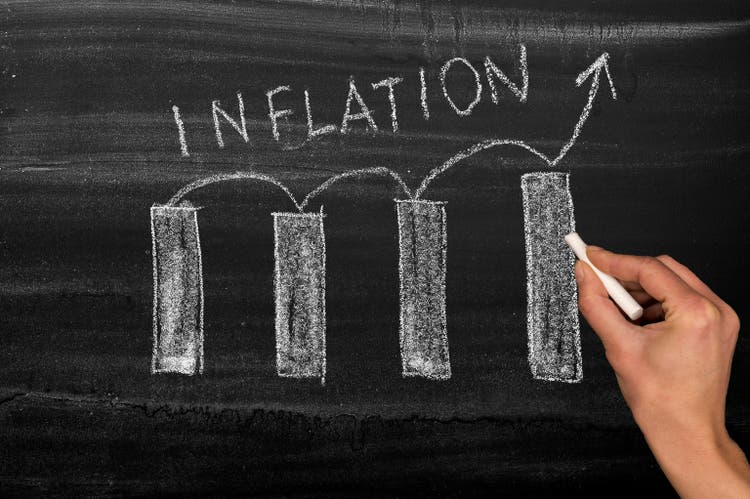marrio31/iStock via Getty Images
Like a bridge over troubled water
I will ease your mind – Simon and Garfunkel
It seems, everyplace you look these days, that the water is churning and troubled. We have the war in Europe, and Russia threatening nuclear weapons. God bless the people in Ukraine. We have inflation sitting at new heights. With the Consumers Price Index (CPI) pegged at 8.50%, the highest rate since 1981, and the Producer Price Index (PPI) pegged at 11.20%, the highest number since data was first collected in 2010. This gives us an average rate of inflation, the way I calculate it, now at 9.85%. That number is both startling and scary. It means that you have to beat 9.85%, in your investments, if you want to be on the winning side of the trade. With the DJIA down -5.19%, and the S&P 500 down -7.84%, and the NASDAQ down -14.66%, year-to-date, this is getting tougher and tougher to do, in plays for appreciation. It is not impossible, mind you, but it is sure a lot more difficult than it was last year. The days of wine and roses have morphed into the nights of root beer and tumbleweed.
Bonds, for the most part, don’t come anywhere close to our average rate of inflation either. Even Bloomberg’s American High Yield Index only yields 6.50%, which is a long distance from 9.85%. The use of most fixed income products just isn’t getting the job done. It may again one day, but it is certainly not doing it now.
Then, we have the Fed about to embark upon a spree of raising interest rates and cutting the size of their balance sheet. Question remains about how much, and how fast, but there seems to be no question that they are about to start on their inflation fighting journey which may result in a recessionary economy, if things get out of hand.
“[The Fed will] have to inflict more losses on stock and bond investors [to rein in soaring inflation] than it has so far. If stocks don’t fall, the Fed needs to force them lower.” -Former Fed President, William Dudley
Next, we have an administration that keeps trying to throw cash into the economy, as the answer to its fiscal and political problems. So, we have the government causing inflation, while the Fed is fighting against inflation. Talk about a jumbled mess.
We are also having supply chain issues. OK, well, it used to be a “supply chain,” and now it is more like a “supply twine,” and one that is full of knots. If you don’t think this is much of a problem, I point you to the General Services Administration which has identified about 200,000 products “of concern.” This is not a small, or insignificant, number.
So, you may ask, what, or where, is this “bridge over troubled water?” I have searched long and hard for something, anything, to beat our inflation rate and to respond, conservatively, to all of the problems that I have listed above. My answer is funds and notes, but very carefully selected ones. These reside in both exchange traded funds, and notes, and in closed-end funds. I also utilize one REIT with a double digit return.
These funds are both tough to find, and difficult to analyze, but I have done my own homework, and a lot of it. All of the funds and notes that I utilize are listed on one exchange, or another, and so they can be bought or liquidated quickly, just like any ordinary stock. There are no hold-backs, of any type, in the funds that I utilize. With over 3,000 choices there are only about 20 funds that I currently use, and they all yield over 10%, and most of them pay monthly, which means that if some, or all, of the money is reinvested, each month, that “compound interest” comes into play. Each and every month it’s, “Show me the money.”
Diversification is another issue here. The source of income comes from bonds, convertible bonds, loans, equities, hedged equities, covered calls, collateralized loan obligations and floating rate notes, just to name some of the categories. Dividends, of course, can be raised or lowered, and so I keep a careful eye on the Net Asset Value (NAV) and on the coverage of the dividends.
There are also issues of liquidity. How many shares are traded, a day, can knock a fund right out of my use of the fund. No sense in getting stuck in some log jam.
You may agree, or disagree, but my “income strategy” is my “bridge over troubled water.” The funds, and notes, certainly move with the markets but the yields and the monthly dividends go a long way, in my opinion, to providing not only some measure of security, but also a measure of opportunity, if the markets gain some measure of stability. The funds, as I said, with yields over 10%, also beat the inflation line and that may be extremely helpful for many people and institutions.
We do not have the power to placate the “troubled water” but we do have the ability to rise above it. So, onwards, and upwards, I go.
Original Source: Author
Editor’s Note: The summary bullets for this article were chosen by Seeking Alpha editors.


Be the first to comment